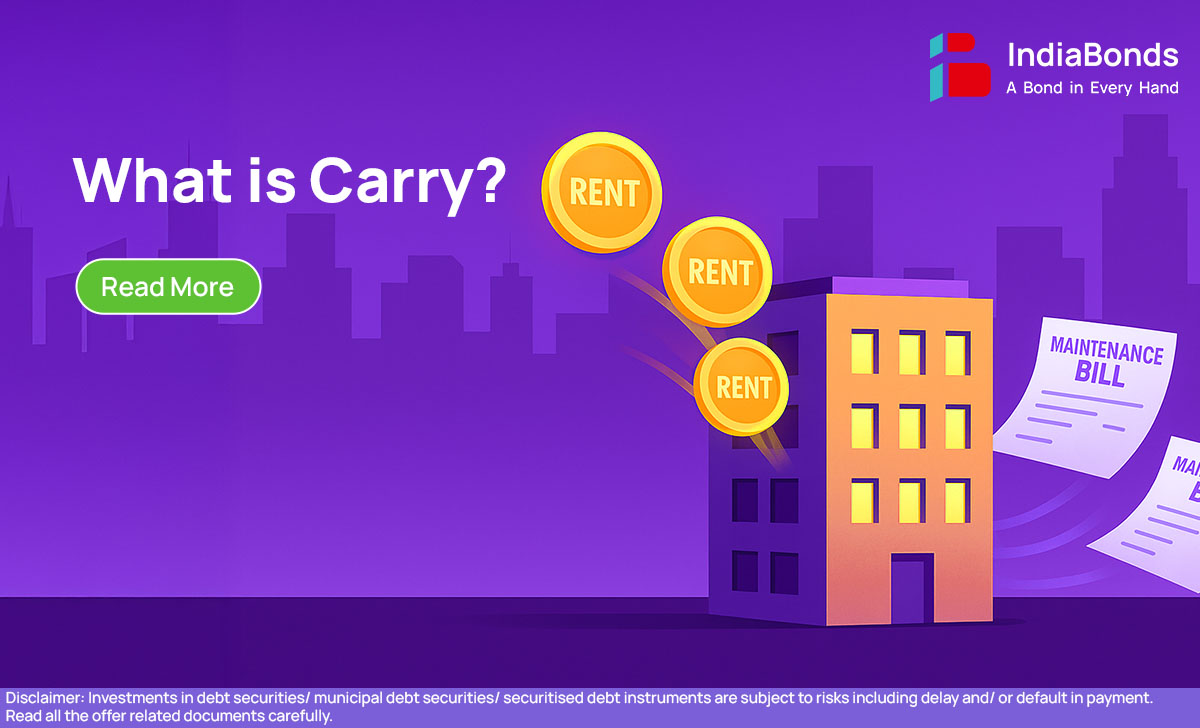What is Carry?

If you’ve spent any time reading about markets, you’ve probably come across the word carry. It sounds simple, but in finance, it carries a lot of weight. At its core, it’s about the cost or return from simply holding on to an investment. Let’s see what it really means in practice.
What is Carry?
So, what is carry in finance? Put simply, it’s the income you earn or the expense you pay just for owning an asset over time. Imagine you’re holding a bond. The interest you receive is part of the carry. But if you borrowed money to buy that bond, the loan interest eats into it. The carry meaning changes slightly with the type of asset—bonds, stocks, currencies—but the idea is the same. It’s about the balance between what you gain and what you spend while holding it. Think of it like rent: you get rent from your tenant (positive carry), but you also pay maintenance (negative carry).
What are Carry Benefits?
Here’s where it gets interesting. The carry definition isn’t just about numbers—it’s about opportunity. A popular approach is the carry trade, where investors borrow in countries with low interest rates and put that money into higher-yielding markets. The difference is their profit. It sounds technical, but the idea is straightforward: make use of the gap.
In bonds, carry shows up as coupon payments. Even if bond prices move up and down daily, the carry makes sure investors earn steady income. With equities, dividends play the same role. In currencies, the carry trade drives huge volumes daily across global markets.
The real benefit? Carry doesn’t need wild market swings to make money. It rewards patience. For investors who prefer stability, carry is like a reliable friend—it keeps working quietly in the background.
Benefits of Holding an Asset
Holding an asset with positive carry has its perks:
- Regular Income – Bonds bring coupons, stocks bring dividends.
- Consistency – Returns keep adding up, even if markets go sideways.
- Risk Offsetting – Sometimes, carry can balance out losses in other parts of your portfolio.
- Carry Trade Advantage – Interest rate gaps between markets can be turned into profits.
In short, positive carry gives investors a reason to stay invested. It’s not flashy, but it’s dependable.




Costs of Holding Stock
Carry isn’t always your friend. There are costs too. In equities, the cost of carry includes brokerage charges, margin funding, or even the lost chance of investing elsewhere. In bonds, if your borrowing costs are higher than the coupon income, you face negative carry.
Take commodities. Storage and insurance eat into returns, turning carry into a drag. In derivatives, margin money and interest rates play the same role.
That’s why understanding what is carry in finance is about balance. It’s about checking whether the income beats the costs. If it does, you’ve got positive carry. If not, it’s negative carry.
Conclusion
Carry may sound like a niche idea, but it sits at the heart of investing. From simple bond coupons to sophisticated carry trade strategies in currency markets, the principle is the same—returns from holding. Knowing the carry meaning helps investors weigh both sides of the coin. Positive carry builds steady gains, while negative carry warns of hidden costs. And while terms like collar definition or collar in finance deal with risk control, carry is about capturing income while time does the work.
FAQs
Q1. What is carry financing?
It means the cost of funding an investment. If you borrow to buy an asset, the interest you pay is part of the carry calculation.
Q2. What is a carry strategy?
A carry strategy is often linked to the carry trade—borrowing at a low rate and investing at a higher rate. The gap between the two rates becomes your profit.
Q3. What is cash and carry in finance?
It’s a trade where you buy an asset in the cash market and sell it in the futures market. The price difference between the two creates your return, often risk-free if done right.



















































